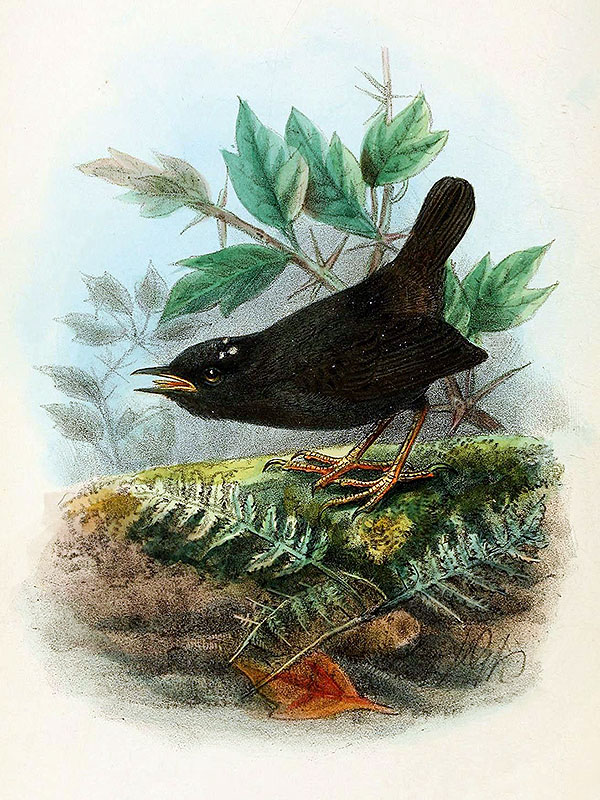Well, many – according to a new study (which apparently took about 40 years in the making!!!).
The tapaculos of the genus Scytalopus are troughout small, mostly greyish colored, inconspicuous birds with poor flight abilities that inhabit the dense undergrowth of the Andean forests of southwestern South America (some species occur more northerly).
The Magellanic Tapaculo (Scytalopus magellanicus (J. F. Gmelin)) (see depiction below) is one of them, and is a part of a complex that shares its name, the Scytalopus [magellanicus] complex, which again includes several species, some of which have been discovered and described only recently.

Depiction from: ‘Richard Crawshay: The birds of Tierra del Fuego. London: B. Quaritch 1907’
(public domain)
Yet, this complex has gotten even richer in species, with the description of three completely new ones, split from others: the Jalca Tapaculo (Scytalopus frankeae), the White-winged Tapaculo (Scytalopus krabbei), and the Ampay Tapaculo (Scytalopus whitneyi), as well as one subspecies (itself only described in 2010) being elevated to species rank, the Eastern Paramo Tapaculo (Scytalopus androstictus). [1]
*********************
References:
[1] Niels K. Krabbe; Thomas S. Schulenberg; Peter A. Hosner; Kenneth V. Rosenberg; Tristan J. Davis; Gary H. Rosenberg; Daniel F. Lane; Michael J. Andersen; Mark B. Robbins; Carlos Daniel Cadena; Thomas Valqui; Jessie F. Salter; Andrew J. Spencer; Fernando Angulo; Jon Fjeldså: Untangling cryptic diversity in the High Andes: Revision of the Scytalopus [magellanicus] complex (Rhinocryptidae) in Peru reveals three new species. The Auk 137: 1-26. 2020
*********************
edited: 26.02.2020











